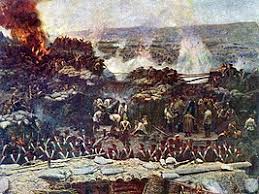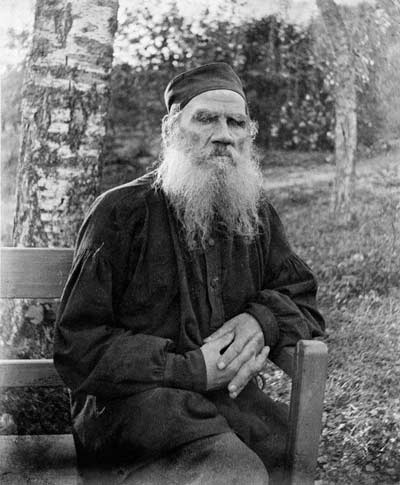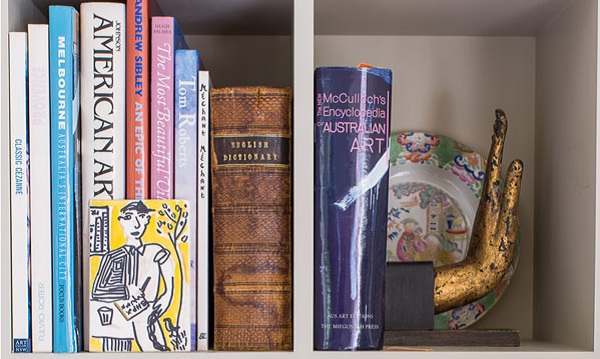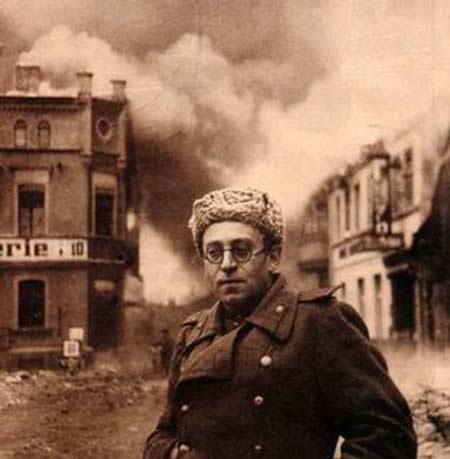Image and theme of the war in Tolstoy’s “Sevastopol Stories”
 In the military stories (“Raid”, “Forest Cutting”, “Sevastopol in December 1854, in May and August 1855”) Tolstoy dwells on the question of how legitimate war, demanding so many bloody victims, is legitimate . This idea is particularly clear in his “Sevastopol Tales” (see their analysis), which describe the famous defense of Sevastopol during the Crimean War.
In the military stories (“Raid”, “Forest Cutting”, “Sevastopol in December 1854, in May and August 1855”) Tolstoy dwells on the question of how legitimate war, demanding so many bloody victims, is legitimate . This idea is particularly clear in his “Sevastopol Tales” (see their analysis), which describe the famous defense of Sevastopol during the Crimean War.
Battles and wars were depicted many times in Russian and foreign literature … – Almost always, these pictures are different, “poetizatsii”, elevated tone, a kind of “militarism, glorifying the exploits of warriors and leaders … Not from such a” front “side portrayed the war Tolstoy, – he looked into her “prose”, – into her terrible reality, portraying the war not “with music and drumming, with flowing flags and prancing generals, but in its present expression – in blood, in suffering, in death” . Not the psychology of the “hero”, but the simple “man” he gave in his essays — not a brilliant panorama of the battle, with proud generals on galloping horses and soldiers in heroic “poses” he drew – but dirty trenches with their everyday life, – infirmaries with disfigured bodies … He looked deep into the souls of the inconspicuous “gray” workers of the war and, with merciless, harsh truthfulness, revealed – hidden in the hearts of the “heroes.”
Conscious of the horror of the “new truth” that he brought to his readers, Tolstoy says:
“Maybe I shouldn’t have to say this, maybe what I said belongs to one of those evil truths that, unconsciously hiding in everyone’s soul, should not be expressed so as not to become harmful, like sediment of wine which should not be shaken in order not to spoil it? .. Where is the expression of evil that should be avoided? Where is the expression of good, which should imitate in this story? Who is her villain? .. All is good and all is bad. The hero of my story, whom I love with all the forces of my soul, whom I tried to reproduce in all its beauty and which has always been, is and will be beautiful – the truth. ”
The attitude to war is most clearly expressed by Tolstoy himself in the detailed description of the “truce”.
“White flags are displayed on the bastion and on the trench, the blooming valley is filled with stinking bodies, the beautiful sun comes down to the blue sea, and the blue sea, flapping, glistens in the golden rays of the sun. Thousands of people crowd, look, talk and smile at each other. And these people are Christians, confessing one great law of love and self-denial, looking at what they have done, with repentance will not suddenly fall to their knees before those who, giving them life, put into the soul of everyone, along with the fear of death, love for good and beautiful, and with tears of joy and happiness will not embrace, like brothers? Not! White rags are hidden — and again the instruments of death and suffering are whistling, innocent blood is shed again, and groans and curses are heard. ”
“Sevastopol stories” have an autobiographical meaning: it is known that Tolstoy from the Caucasus went first to Bessarabia, then to the Crimea, and enlisted in the Sevastopol garrison as a volunteer. He stayed there from the end of 1854 until the end of the siege and took an active part in the heroic defense of the city. He expressed his spiritual moods, obviously, partly in the intentions and feelings of the heroes of the work: Volodya Kozeltsova, partly Mikhailov.



